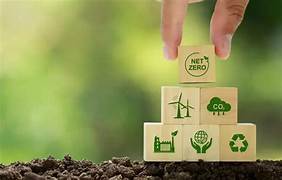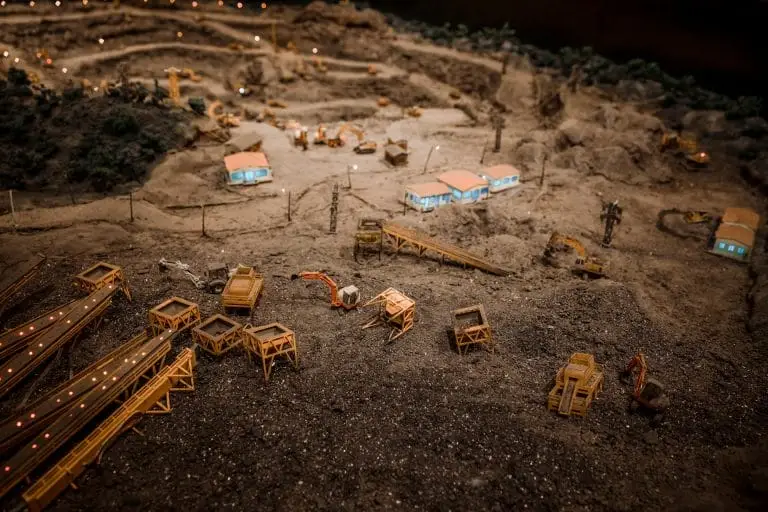Carbon Credit Project Development, Step by Step
October 21, 2024 2024-10-17 21:59
Carbon Credit Project Development, Step by Step
As climate change continues to dominate global conversations, governments, businesses, and individuals are increasingly exploring ways to reduce their carbon footprints. One of the most effective tools in this endeavor is the carbon credit system, which allows organizations to offset their emissions by purchasing credits from certified carbon reduction projects. Developing a carbon credit project is a multi-step process that involves careful planning, verification, and execution. This article provides a detailed, step-by-step guide to help you understand how to develop a carbon credit project, with key points for successful implementation.
Understanding Carbon Credits
Before diving into the project development process, it’s crucial to understand what carbon credits are and why they matter. A carbon credit is a tradable permit that allows the holder to emit a certain amount of carbon dioxide or other greenhouse gases (GHGs). Typically, one credit equals one metric ton of CO₂ emissions. Projects that reduce or remove carbon emissions, such as reforestation, renewable energy, or energy efficiency initiatives, can generate carbon credits.
Step 1: Identifying a Carbon Reduction Project
The first step in developing a carbon credit project is identifying an activity or initiative that can reduce or sequester carbon emissions. These projects usually fall into several categories, including:
- Forestry and Reforestation Projects: Planting trees or protecting forests to sequester carbon dioxide.
- Renewable Energy Projects: Solar, wind, and hydropower projects that reduce the need for fossil fuels.
- Energy Efficiency Projects: Implementing systems or technologies that reduce energy consumption and emissions.
- Waste Management Projects: Reducing methane emissions from landfills or improving waste management techniques.
Key Points:
- Choose a project type that aligns with your organization’s goals and capabilities.
- Ensure the project is feasible in terms of financial, technical, and environmental aspects.
Step 2: Feasibility Study
Once you’ve identified a potential carbon reduction project, the next step is to conduct a feasibility study. This involves evaluating the technical, economic, and environmental viability of the project. The study should also estimate the amount of carbon emissions the project can reduce or sequester over its lifetime, which will determine how many carbon credits the project can generate.
Important Considerations for Feasibility Studies:
- Project Location: Ensure the location is suitable for the type of project (e.g., a windy location for a wind power project).
- Financial Viability: Assess the project’s budget, funding sources, and potential for return on investment.
- Environmental Impact: Evaluate the broader environmental effects of the project beyond carbon reduction.
Step 3: Design and Planning
After the feasibility study, the next step is to develop a detailed project design and plan. This involves specifying the project’s objectives, methodology, timeline, and key stakeholders. For carbon credit projects, it is essential to outline how the project will measure, monitor, and verify the reduction in carbon emissions.
Key Planning Components:
- Baseline Measurement: Determine the project’s baseline emissions, which represent the amount of emissions that would occur without the project.
- Monitoring Plan: Develop a system for continuously tracking emissions reductions or carbon sequestration throughout the project.
- Stakeholder Engagement: Identify and involve key stakeholders, such as local communities, government agencies, and project investors.
Step 4: Certification and Validation
For a carbon credit project to generate tradable credits, it must be validated and certified by an independent third-party organization. Certification ensures that the project meets recognized carbon standards, such as:
- Verified Carbon Standard (VCS): One of the most widely recognized voluntary carbon standards.
- Gold Standard: Focuses on projects that contribute to sustainable development as well as carbon reduction.
- Clean Development Mechanism (CDM): A United Nations framework for certifying projects in developing countries.
Certification Process:
- Validation: A third-party auditor assesses the project’s design and feasibility, ensuring it meets the chosen standard’s requirements.
- Verification: After the project is operational, auditors verify the actual emissions reductions or sequestration, often annually, to confirm that the project is delivering on its promises.
- Issuance of Credits: Once verified, carbon credits are issued and can be traded or sold in carbon markets.
Important Notes on Certification:
- The certification process can be lengthy and costly, but it is crucial for ensuring credibility and market access.
- Choose a certification standard that aligns with your project’s goals and target market.
Step 5: Project Implementation
Once the project has been validated and certified, the next step is to move into project implementation. This involves the construction or initiation of the project activities, such as planting trees, installing renewable energy systems, or upgrading equipment for energy efficiency.
Key Implementation Steps:
- Construction or Set-Up: Begin the physical implementation of the project, ensuring it follows the specifications outlined in the project design.
- Continuous Monitoring: Begin tracking carbon emissions reductions or sequestration as soon as the project becomes operational.
- Adaptation and Troubleshooting: Address any issues or changes that arise during implementation, ensuring that the project stays on track to meet its carbon reduction targets.
Step 6: Monitoring and Reporting
Monitoring and reporting are critical components of a carbon credit project. These activities ensure that the project continues to reduce or sequester carbon as expected, allowing for the issuance of new carbon credits. Monitoring should follow the plan outlined during the design phase, and regular reports should be submitted to the certification body for verification.
Essential Monitoring Elements:
- Data Collection: Use reliable methods to measure the actual emissions reductions or carbon sequestration.
- Annual Verification: Submit monitoring data to an external auditor for annual verification and certification of new credits.
- Documentation: Keep detailed records of all project activities, data collection, and verification processes for future audits and compliance.
Step 7: Trading or Selling Carbon Credits
Once carbon credits are verified and issued, they can be traded or sold on the carbon market. There are two main types of carbon markets:
- Compliance Markets: Regulated markets where businesses are required by law to offset their emissions, such as the European Union Emissions Trading System (EU ETS).
- Voluntary Markets: Unregulated markets where companies or individuals choose to purchase carbon credits to voluntarily offset their emissions.
Selling Carbon Credits:
- Carbon Market Platforms: Register the credits on platforms such as Climate Action Reserve or Verra for sale.
- Direct Sale: Sell the credits directly to businesses or individuals looking to offset their emissions.
- Price Considerations: The price of carbon credits varies based on market demand, the certification standard used, and the type of project.
Key Points for Selling Credits:
- Keep track of market trends to maximize the value of your credits.
- Consider partnering with brokers or market intermediaries to facilitate credit sales.
Step 8: Project Maintenance and Longevity
Finally, it’s important to ensure the long-term sustainability of the project. Many carbon credit projects have lifespans of 10 to 30 years, during which they must continue to reduce or sequester carbon to maintain their value. Regular maintenance, monitoring, and reporting will ensure the project’s success over time.
Maintenance Considerations:
- Ongoing Monitoring: Ensure continuous data collection to support annual credit issuance.
- Project Adaptations: As technology or environmental conditions change, adapt the project to maintain efficiency and sustainability.
- Reinvestment: Use revenue from carbon credits to reinvest in the project and ensure its long-term viability.
Conclusion
Developing a carbon credit project is a complex but rewarding process that can provide both environmental and economic benefits. By following these steps—identifying a project, conducting a feasibility study, designing and certifying the project, implementing, monitoring, and eventually selling carbon credits—you can contribute to global efforts to combat climate change while creating new revenue streams for your organization.
For a more visual understanding of the carbon credit project development process, watch this informative video: Watch Here.
By: Daniela Febres
Related Posts
Carbon Credit Project Development, Step by Step
October 21, 2024 2024-10-17 21:59Popular Tags





























